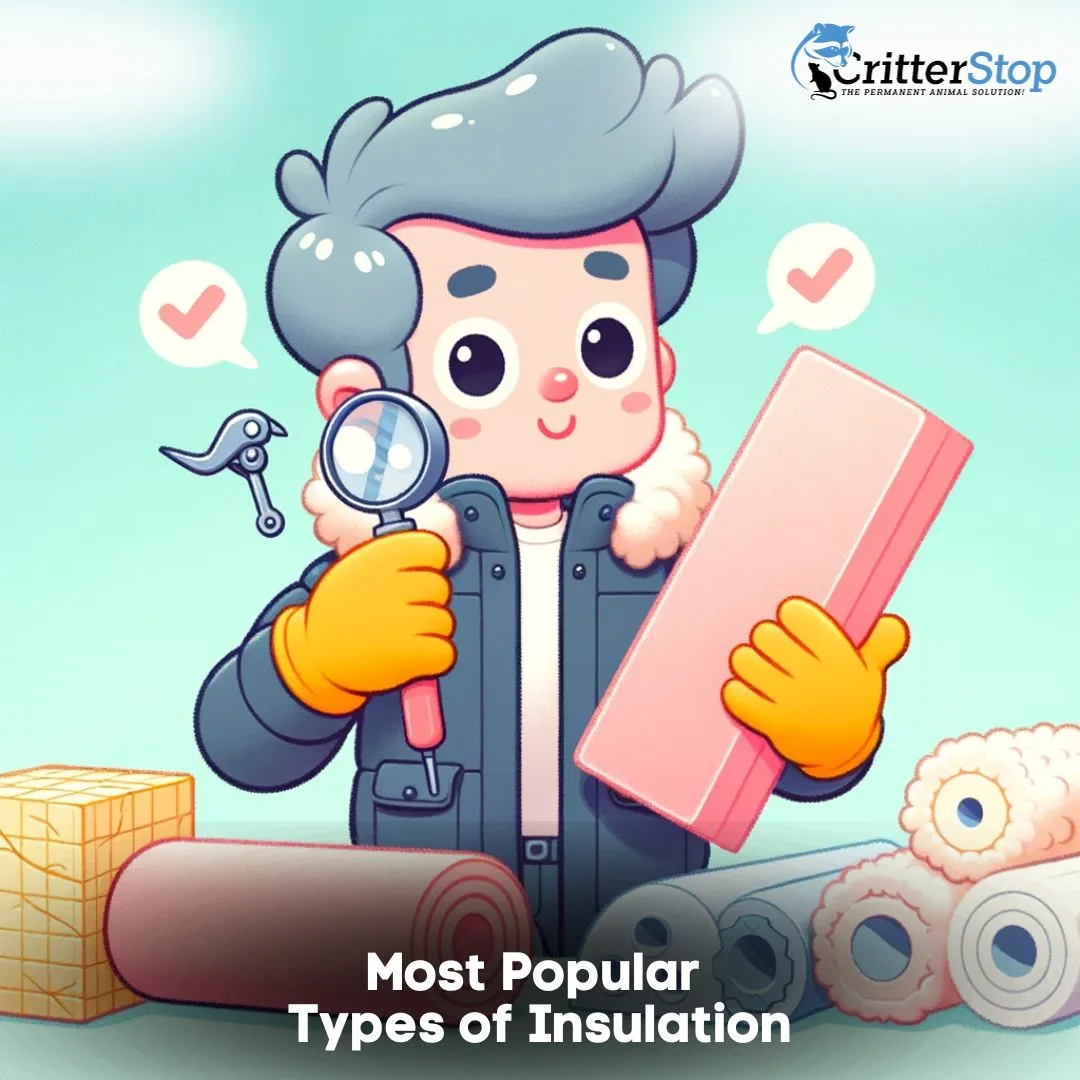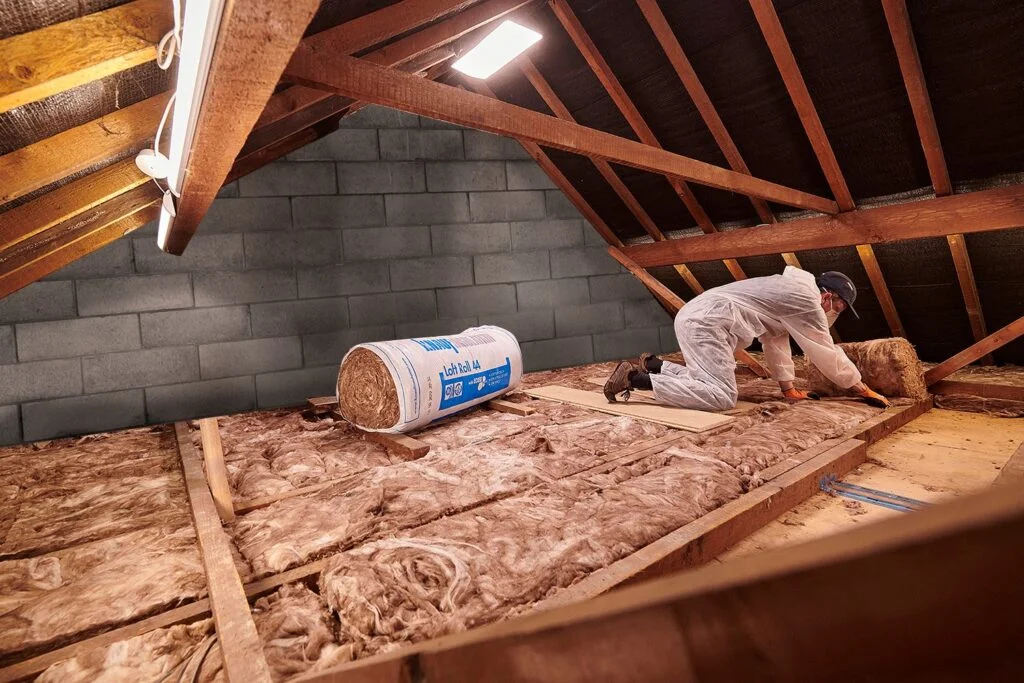
Insulation does not only keep your home warm in the colder months and cool in the hotter months but also helps you save a ton of your money on your utility bills. According to the energy department, your heating and cooling appliances consume at least half of your energy usage.
Considering all these benefits, deciding to insulate your house is a wiser option. However, choosing the type of insulating material that would suit your home the best is a little trickier. With so many options available in the market, picking the right type of insulating material can be an overwhelming process.
Gone are the days when homeowners used horsehair, old clothing, and newspapers on their walls to keep their houses comfortable to live in. Now, more durable and efficient types of insulating materials have been introduced in the building industry. If you want to choose the best insulation for your house, check this guide that our team from Critter Stop has prepared!
Insulation is an efficient and durable material that traps the warmth inside a building when it is ice cold outside. They also help to decrease the amount of heat entering your home when it is scorching.
R-values are used to check the effectiveness of insulation. The higher the R-value, the more efficient insulation will be in limiting the heat transfer, and the higher its performance will be.

To choose the best insulation for your house, you must start by deciding on what parts of your home to insulate. When insulating your house, areas that are subjected more to heat transfer should be prioritized. Here are some of the areas to consider insulating:
While insulating your house, it is necessary to insulate your attic since it is subjected more to heat transfer than other areas of your home. Heat will rise and escape through it if it is not well-insulated.
By choosing the best attic insulation, you can dramatically reduce your energy bills. You no longer need to depend on heating and cooling appliances to maintain a comfortable temperature in your house. Isn't it amazing to just insulate your attic and cut back dramatically on energy bills?

A crawl space is a narrow space between the ground and ground floor of your house. Insulating the crawl spaces of your house can help a lot in retaining warmer and colder temperatures in the home.
Also, since crawl spaces usually have pipes, insulating them can ensure that pipes do not freeze in colder months.
It is necessary to insulate around water pipes to stop them from freezing in colder months and prevent heat loss, resulting in lower energy bills.
When insulating your house, it is essential to ensure that both your house's interior and exterior walls are well-insulated. Otherwise, even the best insulation will not do its job perfectly. Insulating the exterior walls of your home will put a blanket-like barrier between you and the outside world. It will help in reducing the heat transfer and maintaining comfortable temperatures.
On the other hand, insulating interior walls properly can reduce your energy bills by limiting the heat transfer between rooms. With well-insulated interior walls, you will no longer be relying on your heating and cooling appliances to maintain a comfortable temperature in your house. A one-time investment in cutting back on monthly energy costs!
Adding insulation to flooring, especially basements and other unheated areas, can help limit the heat transfer and maintain a comfortable home temperature. Also, well-insulated floors can help reduce noise, especially in double-story or multi-level homes.
Insulating the basement of your house, even if it is unfinished, helps limit the heat transfer. Also, if your basement is not undergoing any work, insulating it can make it a comfortable living space, adding extra space to your house to hold parties or movie nights.
There are many insulating materials available in the market. Some of them are cheap, and others are pretty expensive. Each of these insulation materials has its benefits and pitfalls. So, when choosing the right type of insulating material, you must know which material would suit your area's weather conditions the best. Here are the common types of insulation materials:
Fiberglass insulation is an immensely popular type of insulation material these days for all the right reasons. It is made from fine glass fibers. The best part of using fiberglass insulation is that it is inexpensive, moisture-resistant, and relatively easy to install. What else can homeowners wish for?
However, unfortunately, it is skin and lung-irritant. So, if you are going for fiberglass insulation, it is better to take help from DFW insulation professionals to keep you and your family safe. Otherwise, don't forget to wear protective clothing and anti-fog goggles if you plan to do it yourself.
If your house is located in a humid area, fiberglass insulation will be the best choice for you.
Foam insulation is usually made from different types of plastic, such as polyurethane or polystyrene. Since it is sprayed into place, it cannot be easy for homeowners to install it themselves. It is also more expensive than fiberglass and other types of insulation materials.
In our experience, it is the best insulation for sealing cracks and holes around an attic, as it prevents air leakage better than any other insulation material.

Usually, cellulose insulation is made of recycled paper products that have been chemically treated with many additives to make them rodent and fire-resistant. It is the most environment-friendly insulating material available in the market.
It is easy to install and often more affordable than fiberglass insulation. However, it can absorb moisture quickly, which can sometimes contribute to mold and mildew growth. So, if you live in an area with humid weather conditions, it is probably better to avoid using cellulose to insulate your house as mold growth can become a major health concern for you and your family.
We have provided services removing and installing insulation to thousands of customers in Dallas-Fort Worth, so we have seen a lot of different types of insulation. Once you have chosen the insulation material, you will further need to select the type of insulation, which means the installation method. Here are the most popular types of insulation:
Loose-fill insulation refers to the type of insulation that is sprayed or blown into place. The common types of insulation materials used for loose-fill insulation are fiberglass and cellulose. Both cellulose and fiberglass blown-in insulation are usually composed of recycled materials.
The best part of loose-fill insulation is that it can easily reach oddly shaped areas, especially attics. So, with loose-fill insulation, you can easily insulate hard-to-reach areas.
Spray foam insulation can be sprayed or injected in place to form an effective barrier. It later expands and hardens to fill gaps, holes, and cracks. Therefore, it is perfect for insulating oddly-shaped areas.
Once it has been appropriately set, you can trim or paint it if required. It will be easy to reduce air leakage by sealing all the holes and cracks with spray foam insulation.
Insulation batts are usually pre-cut sections of insulation material specifically designed for easier installation. However, insulation batts cannot be used for oddly shaped areas or sealing the cracks or holes in your attic. Additionally, it usually is not as effective as loose fill insulation since there will be areas in an attic where wires come out from underneath the batt rolls and air gets out. Since batt insulation is not as malleable and does not form to its environment like blown-in insulation, it often allows greater air flow, lowering effectiveness.
Insulation rolls refer to the insulation type in which rolls of insulation materials are placed between the framing. You will not be leaving more gaps between sections with this type of insulation, unlike insulation batts.
It is the perfect type of insulation for areas where long and continuous insulation is required, such as walls and floors. However, like insulation batts, they cannot be used to insulate difficult-to-reach or oddly shaped areas.
Foam board insulation is the most common type of insulation used by many homeowners. It usually consists of rigid panels of insulation material with a high R-value that you can use to insulate any area of your house.
While it can be an affordable option for well defined and easily accessed areas, it cannot be used to insulate areas that are oddly shaped.
Winter and summer seasons bring all sorts of fun - but one thing that is not so fun is increased energy bills. In the blistering heat or the frigid cold, homeowners depend on heating and cooling appliances to keep the temperature of their homes moderate. As experts in insulation, we can affirm that with an efficient installation, you can keep your home temperature more consistent and dramatically reduce your energy bills
Choosing the best type of insulation will not help if it is not installed correctly though. For many homeowners in the Dallas - Fort Worth metroplex, especially those unwilling to work for prolonged periods in their attic, enlisting the help of DFW insulation professionals is well worth the investment. Contact Critter Stop to get your old insulation removed or install a new one. One-stop solution for all your insulation needs. Call us now at (214) 234-2616 and solve your insulation problems!
Visit our Critter Library and learn more about our furry friends